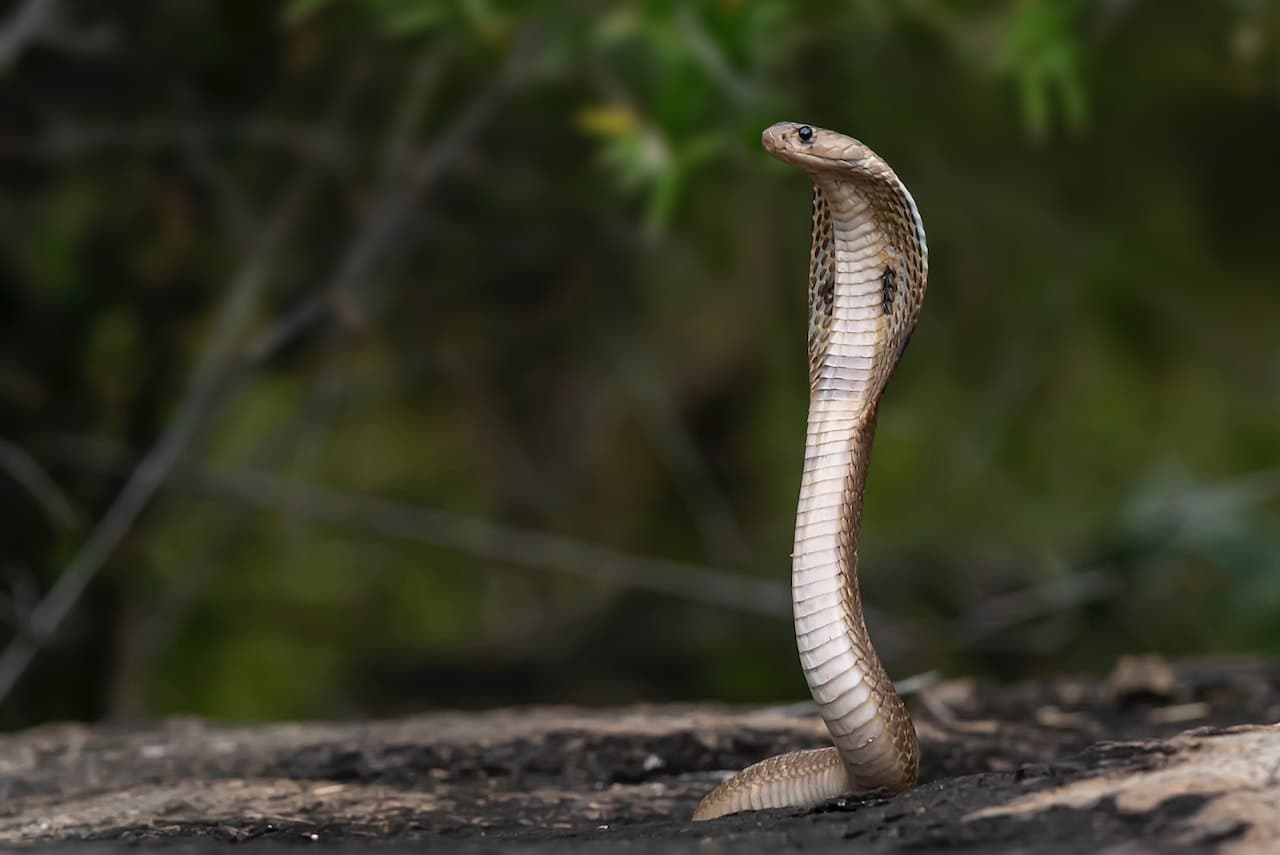King cobra is the world’s longest venomous snake, and it is one of the snakes that Cambodian people fear most. Besides having a fearsome reputation in Cambodia, the king cobra is also a prominent symbol in the mythology of India, Myanmar, ad Sri Lanka. It is also the national reptile of India, and this reptile is quite interesting. Maybe there are many things about them that you don’t know about so let’s take a look below.
Appearance
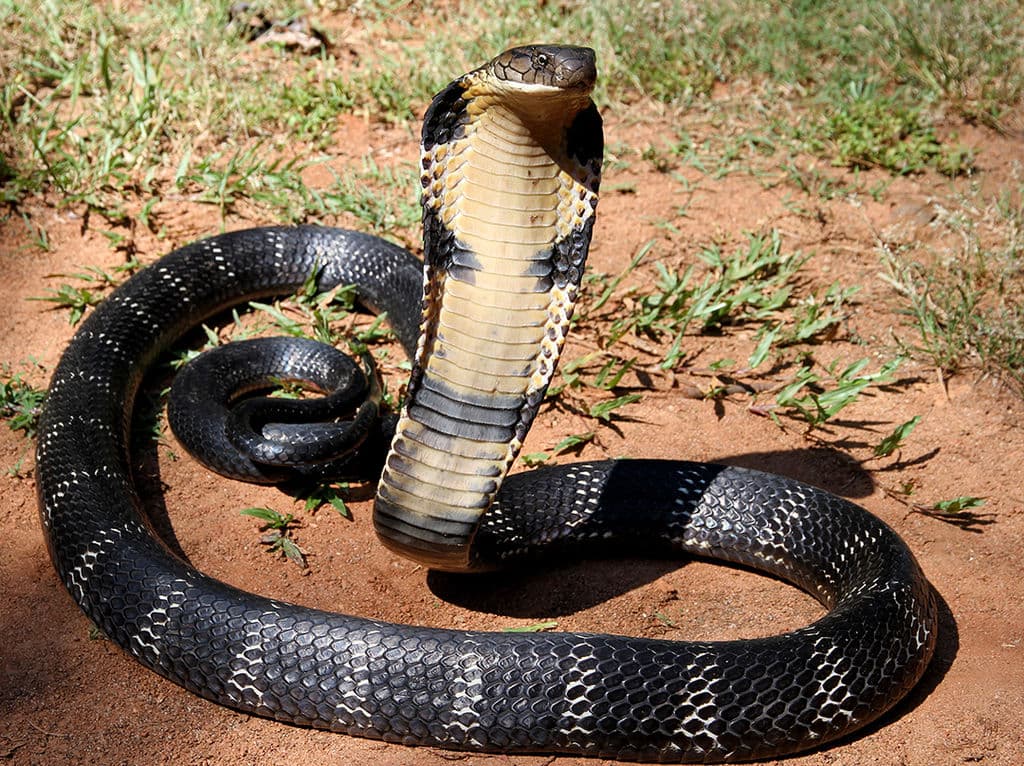
A king cobra can grow to an average length of 3.18 to 4 meters, or even up to 5.85 meters long. They are brown or dark olive in color, and their belly is cream or pale yellow. The coloration of king cobra species varies across habitats, but they usually have a black band with white or yellow crossbands. King cobras have a black head with two crossbars near the snout and another two behind their eyes.
When mature, a king cobra can be bulky and massive with the ability to expand its flexible jaws to swallow large prey. A king cobra’s jawbones are connected by pliable ligaments, allowing the lower jawbones to move independently. This is why swallowing prey whole and prey larger than its head is not a challenge. On top of that, this venomous snake species also have keen eyesight that can detect moving prey almost 100 meters away.
Behavior
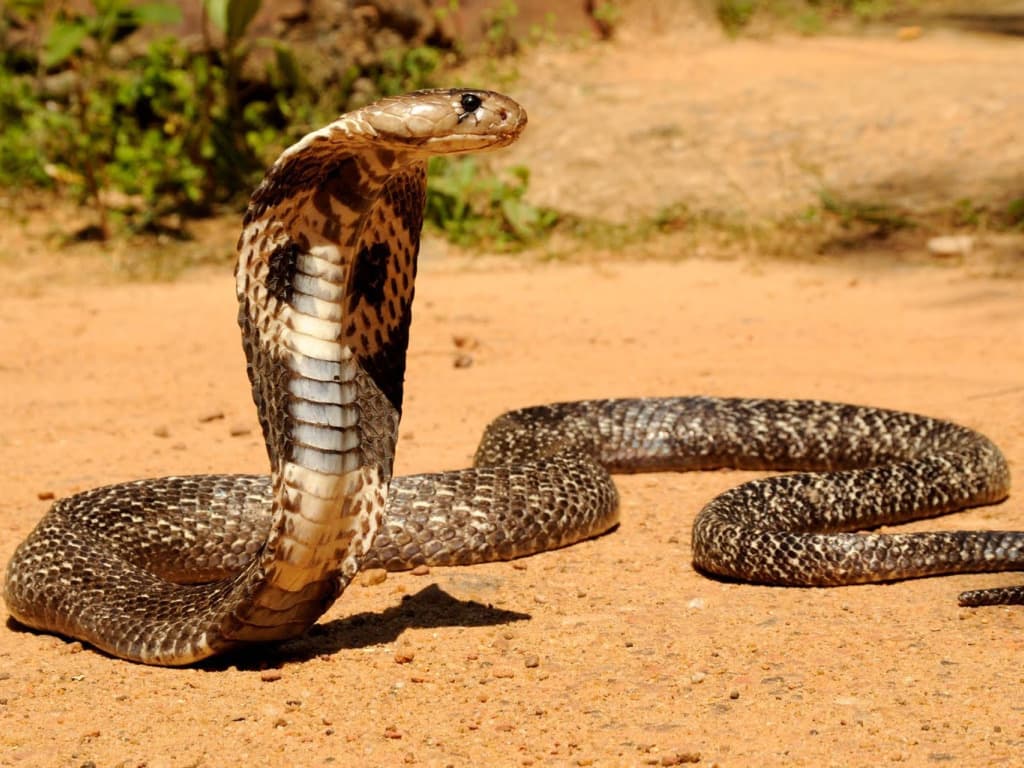
King cobras are solitary creatures so they forage alone and only come together to mate. The interesting thing is that they are the only snakes in the world that build nests for their eggs and guard them until they hatch. These land serpents are active throughout the day, the chance to encounter one at night is not zero. Normally, king cobras prefer to avoid confrontation and escape. However, they are not afraid to attack when provoked.
They can be highly aggressive, with the ability to rear up the anterior portion which is one-third of their body. A king cobra will look you in the eye, puff, and hiss before charging if you don’t back away. A king cobra can strike fast and at a long range when lifting its body up. More than that, they can deliver multiple bites in a single attack and they are known to bite and hold on as well. Most of their victims are snake charmers but unprovoked attacks are uncommon.
Feeding & Habitats
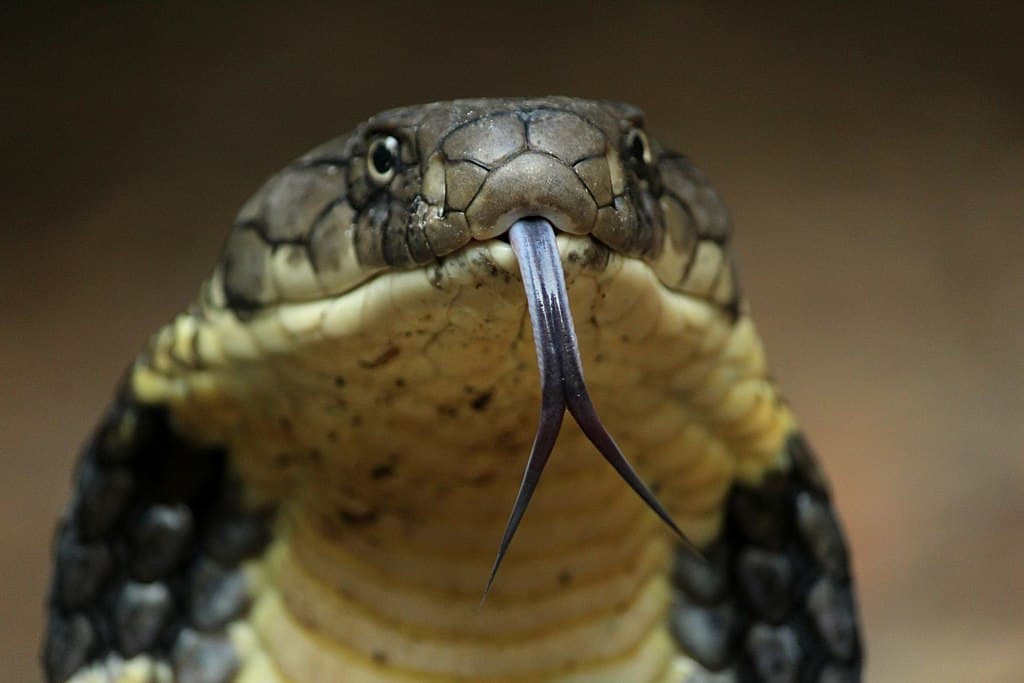
Just like other snakes, king cobras receive chemical information via their gifted forked tongue. This special tongue allows them to pick up scent particles and transfer them to a special sensory receptor. As carnivores, king cobras rely on this forked tongue to find prey. The scary part is that their main diet is other snakes or other venomous snakes such as krait and cobras. In case those are not available on the menu, they will also go for birds, eggs, lizards, and rodents. After a large meal, a king cobra can go without food for months because of its slow metabolic rate.
Nowadays, king cobras are common in East Asia, South Asia, and Southeast Asia. Some of those countries are Bangladesh, Bhutan, Brunei, Cambodia, China, Hong Kong, India, Indonesia, Laos, Malaysia, Myanmar, Nepal, the Philippines, Singapore, Thailand, and Vietnam. Their main habitats are mangrove swamps, tropical dry forests, and tropical moist forests. But they also live in agricultural areas, bamboo thickets, dense highland forests, and areas dotted with lakes and streams.
Predators & Threats
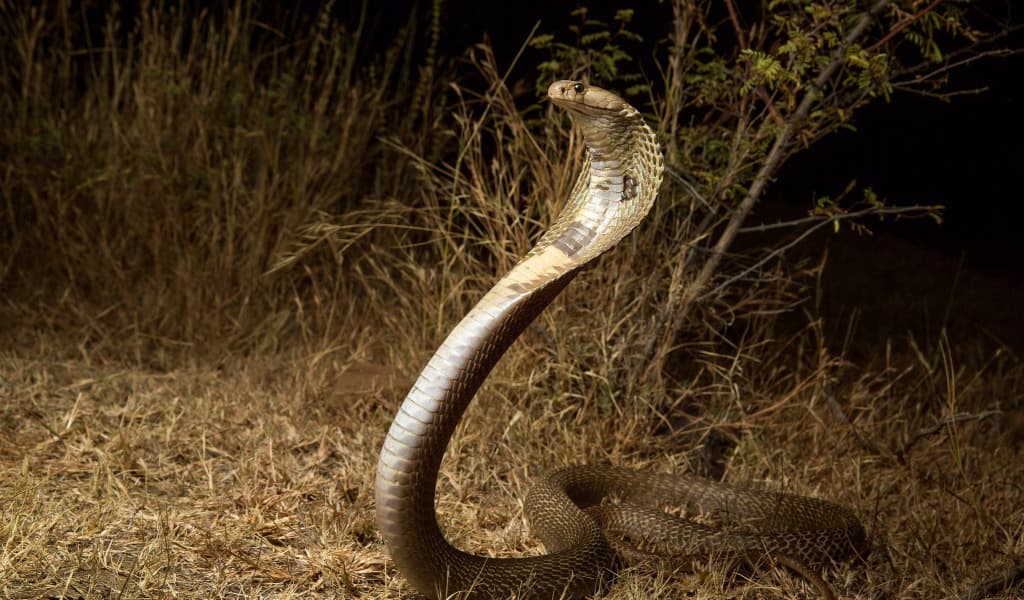
Being the most venomous snake in the world does not stop a king cobra from having predators. Their number one predators are no other than the animals that are immune to neurotoxins in snake venom, mongoose. When facing this natural predator, a king cobra generally tries to flee instead of attacking because its venom is no use. In case the escape is futile, it will also confront the predator by forming the hood and emitting a hiss.
The destruction of forests is the main cause of their population decline. At the same time, ongoing collection for the international pet trade also plays a part. People also harvest them for meat, skin, and other uses in traditional medicine. Currently, this species is classified as Vulnerable on the IUCN Red List with a decreasing number as we speak.
Venom
Postorbital venom glands are where the king cobra’s venom is produced. It can deliver up to 420mg of venom in dry weight per bite. The toxin is strong enough to affect the victim’s central nervous system, resulting in blurred vision, drowsiness, severe pain, and vertigo. If the envenomation is serious, the victim will face cardiovascular collapse which results in a coma. Next thing they know, the respiratory failure will lead to their death.
Related Post: Facts About Greater Adjutants
